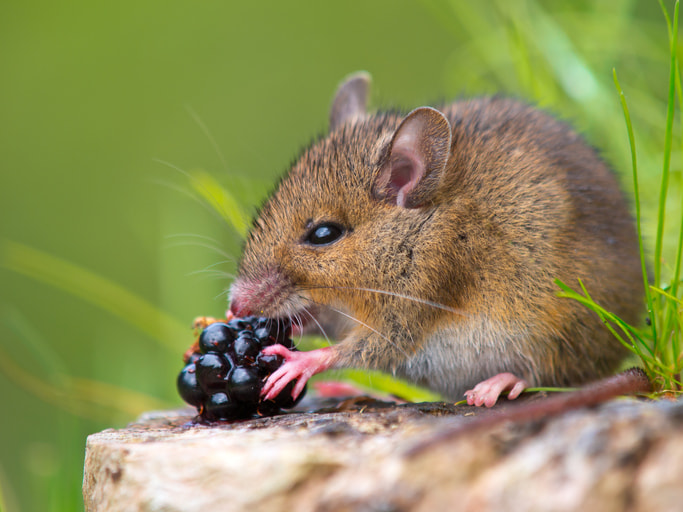Have you heard of a rodent capable of doing damage to lawns, trees, and gardens? Do you know about the furry, sneaky, critters that are hard to spot and like to eat your plants? Read on to learn what a vole is, where they live, and how to identify signs of their activity.
What is a Vole?
A vole (sometimes called a field mouse and/or meadow mouse) has small ears, a short tail, small eyes, a stocky body, and a blunt nose. They are approximately 4 to 8 inches long, weigh about 2 oz, and have brown or gray fur. Due to a high metabolism, voles consume their own weight in food each day! A female vole produces a litter of 3 to 6 young each month.
Where Do Voles Live?
Voles create nests under the ground. They dig several burrows for protection and shelter and tunnel in search of sustenance. Their tunnels may span up to ¼ of an acre. Though they live underground they prefer to travel on the surface. Unlike moles, they do not make dirt mounds. Voles do not hibernate and are active day and night.
What Do Voles Eat?
Voles are omnivores and eat almost anything; stems and blades of grass, bulbs, trees, plant roots, seeds, stems, leaves, and, on occasion, insects and snails.
How Do Voles Get In Your Yard?
Young voles venture from their parent’s burrows and establish their own territory. If you live in a wooded subdivision, are surrounded by native plants, and/or have a well-mulched yard, these young voles can find and invade your lawn and gardens.
Do Voles Cause Damage?
Voles can and will dig runways beneath your lawn and gardens, aiming to munch on your plants and vegetables. They even girdle trees, stripping the bark all the way around, often resulting in the death of your plant.
What Are The Signs Of The Presence of Moles?
If you are observant, you can identify the signs of the presence of voles in your garden and/or yard. These signs include:
- Flower bulbs are eaten from below ground
- Chewed bark near the base of shrubs and trees
- Tunnels through a root system, causing damage to shrubs and trees
- Young trees or shrubs leaning over
- Irregular, 1 to 2-inch wide paths of clipped and/or trampled grass or soil
- Holes (round, clean, about 1 ½ inches in diameter) in your lawn
- Girdled stems/bark with irregular gnaw marks
- Yellow, wilted plants
What Can You Do?
To deter and/or control voles in your yard:
- Use repellents, available in both spray and granules
- Eliminate areas of cover around the perimeter of your yard
- Try vole bait stations, available at most hardware and garden stores
- Trap with live traps
- Add gravel to your bulb-planting holes
- Surround trees with a tree guard
- Fence your garden, 12 inches above ground and 6 inches deep
- Sprinkle garlic, cayenne powder, onion, castor oil, and/or nitrogen fertilizer into vole tunnels
- Get an outdoor cat or a dog
- Avoid putting mulch close to shrubs and trees
- Call a pest management expert
Have you noticed damage caused by voles in your yard and/or garden? Need help protecting your plants and trees from hungry voles? Contact One Man and a Ladybug. We have the tools and experience needed to safely combat your problem. We can help you with your rodent infestation.



